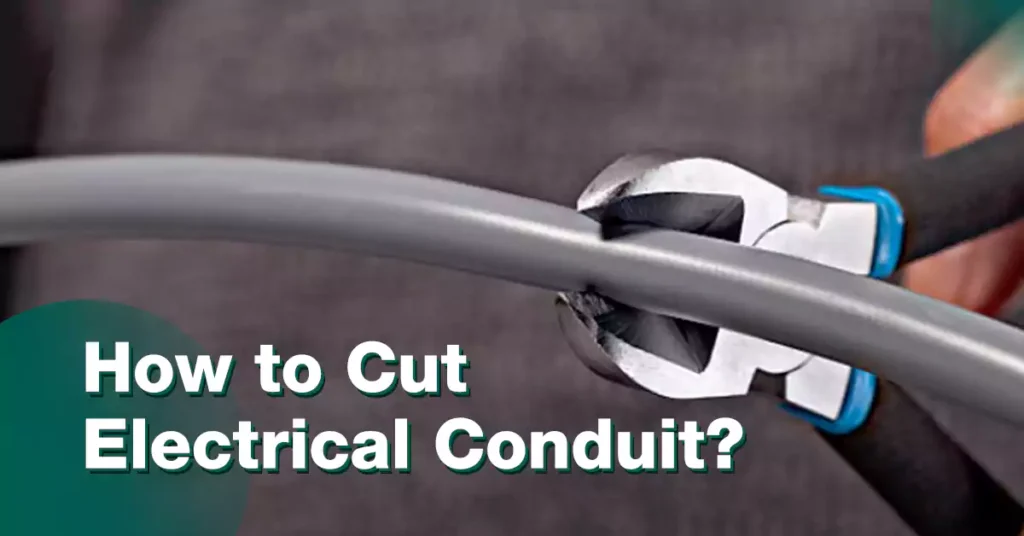
Tabla de contenido
Durante el instalación de conductos eléctricosInevitablemente, debemos cortar los conductos eléctricos, ya que las diferentes ubicaciones de instalación requieren conductos de diferentes longitudes. Sin embargo, en la práctica, algunas operaciones irregulares pueden generar riesgos de seguridad e incluso requerir retrabajos.
En esta publicación, analizaremos en detalle las características de los diferentes conductos eléctricos y cómo cortarlos correctamente. Si eres un electricista experimentado, también puedes seleccionar la pieza que te interese en la columna "Índice" de la parte superior. ¡Comencemos!
Comprensión de los conductos eléctricos
¿Qué es el conducto eléctrico?
Conducto eléctrico se refiere a un sistema de tuberías, tubos o canales diseñados específicamente para proteger y organizar el cableado eléctrico en diversas aplicaciones. Sirve como carcasa protectora que protege los cables eléctricos de daños físicos, humedad, productos químicos y otros factores externos que podrían comprometer su integridad y representar riesgos de seguridad. Al contener los cables dentro de una carcasa segura, el conducto garantiza la longevidad y la fiabilidad de los sistemas eléctricos.
Una de las principales funciones de los conductos eléctricos es proporcionar una ruta designada para que los cables eléctricos se distribuyan de un lugar a otro. Esto facilita la organización y gestión del sistema de cableado, facilitando su localización y mantenimiento. Al mantener los cables ordenados, los conductos facilitan la resolución de problemas y minimizan el riesgo de enredos o errores de colocación, lo que puede generar confusión e ineficiencias.
2 tipos de conductos eléctricos (PVC vs. metal)
Los conductos eléctricos se dividen en dos categorías principales: conductos de PVC (cloruro de polivinilo) y conductos metálicos. Cada una de estas categorías tiene sus propias características y aplicaciones.
Conducto de PVC:
Condit de PVC rígido
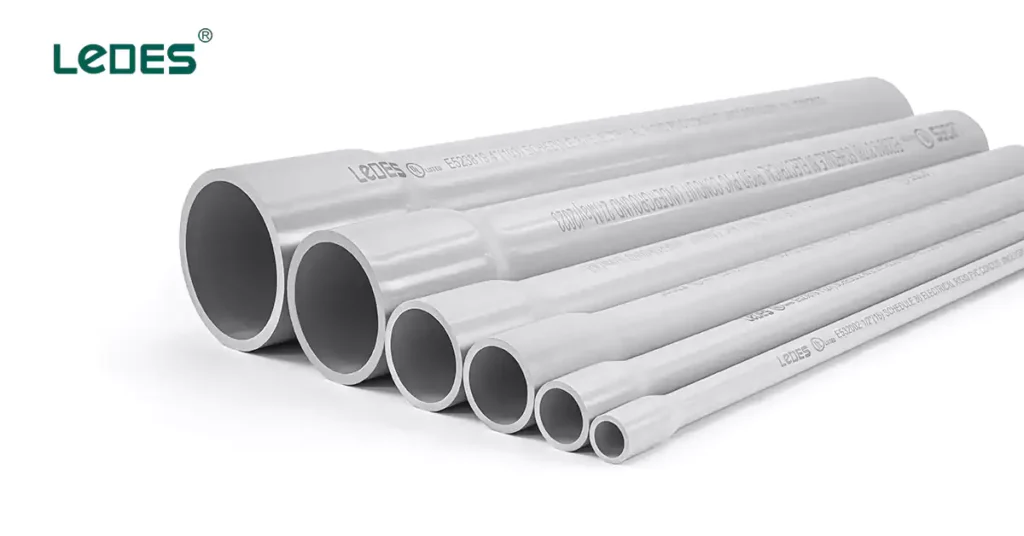
Conducto rígido de PVC, Es un tipo común de conducto fabricado con cloruro de polivinilo duradero. Está disponible en varios tamaños y formas, incluyendo tramos rectos, codos, acoplamientos y accesorios. El conducto de PVC ofrece las siguientes ventajas:
5 beneficios del conducto rígido de PVC
- Asequibilidad: El conducto de PVC es rentable, lo que lo convierte en una opción popular para muchos proyectos eléctricos.
- Ligero: El conducto de PVC es liviano en comparación con el conducto de metal, lo que hace que sea más fácil de manipular e instalar.
- Resistencia a la corrosión: El conducto de PVC es altamente resistente a la corrosión, la humedad y la mayoría de los productos químicos, lo que garantiza una durabilidad a largo plazo.
- Propiedades aislantes: El conducto de PVC proporciona aislamiento eléctrico, reduciendo el riesgo de descargas eléctricas y cortocircuitos.
- Versatilidad: El conducto de PVC está disponible en diferentes diámetros y se puede utilizar para diversas aplicaciones, como cableado residencial, comercial e industrial.
El conducto de PVC se utiliza comúnmente en aplicaciones residenciales, como el cableado de enchufes, interruptores, luminarias y sistemas de baja tensión. Su facilidad de instalación, precio asequible y resistencia a la corrosión lo convierten en una opción ideal para diversos proyectos eléctricos.
Tubos eléctricos no metálicos (ENT):
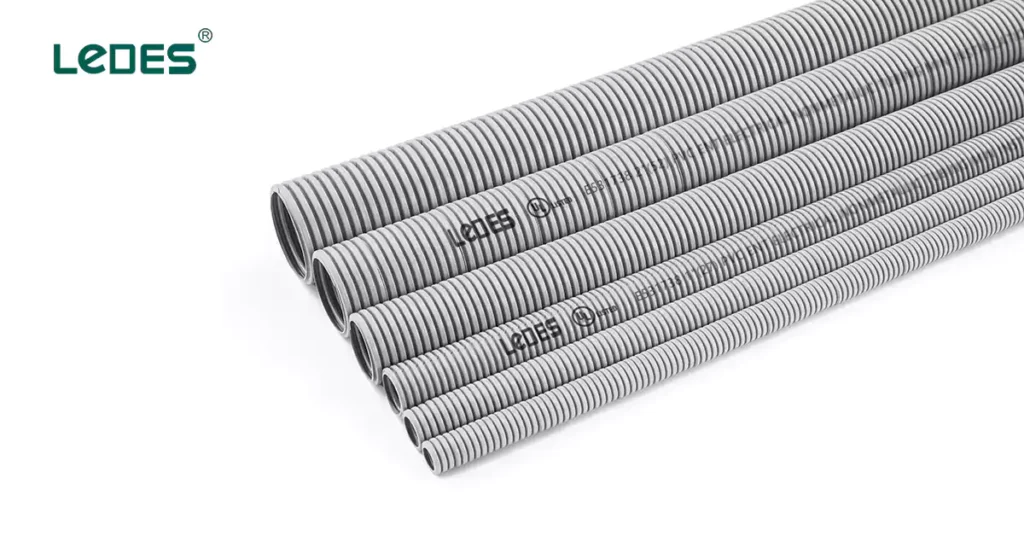
OtorrinolaringologíaEs un tipo de conducto más flexible y maleable que el conducto rígido de PVC. Está fabricado con PVC corrugado, flexible y retardante al fuego. El conducto ENT ofrece las siguientes ventajas:
4 beneficios de los tubos eléctricos no metálicos
- Flexibilidad: El conducto ENT es altamente flexible, lo que permite una fácil instalación alrededor de obstáculos y espacios reducidos.
- Ligero: El conducto ENT es liviano, lo que hace que sea fácil de manipular e instalar.
- Resistencia a la corrosión: Al igual que el conducto de PVC rígido, el conducto ENT es resistente a la corrosión, la humedad y la mayoría de los productos químicos.
- Versatilidad: El conducto ENT es adecuado para diversas aplicaciones, incluido el cableado residencial, comercial e industrial que requiere flexibilidad y facilidad de instalación.
El conducto ENT se utiliza comúnmente en aplicaciones residenciales y comerciales donde el cableado debe pasar a través de paredes, techos o pisos. Su flexibilidad y fácil instalación lo convierten en una excelente opción para renovaciones o situaciones que requieren maniobrabilidad.
Conducto metálico:
El conducto metálico es una tubería metálica que se utiliza para proteger la seguridad de cables y fibras ópticas. Generalmente está hecho de hierro, aluminio o acero. En comparación con el conducto de PVC, presenta mayor resistencia mecánica y durabilidad, y también es un tipo de conducto de uso común. Existen varios tipos de conductos metálicos que se utilizan comúnmente en instalaciones eléctricas.
3 tipos diferentes de conductos metálicos más comunes
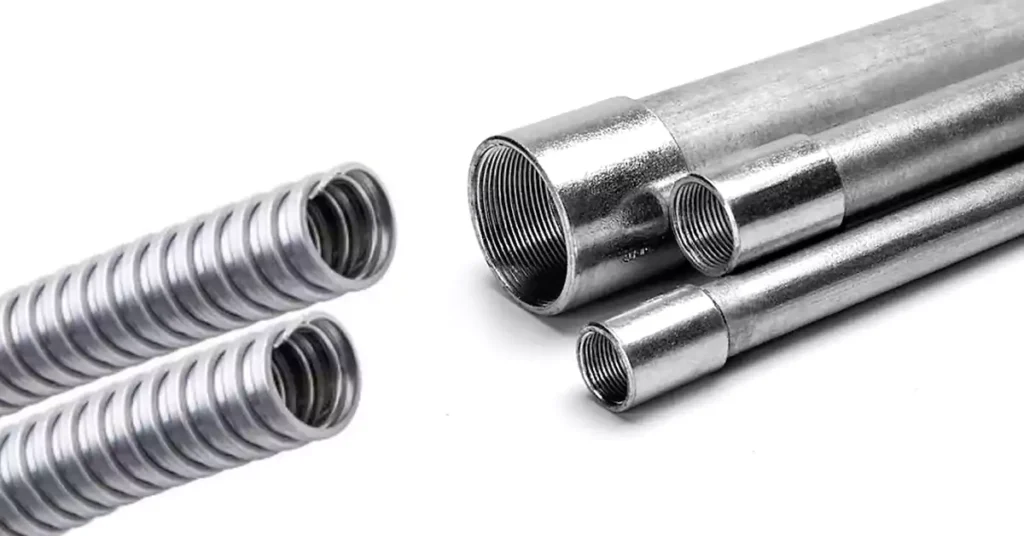
Conducto metálico rígido (RMC):
El RMC es un conducto metálico de alta resistencia fabricado en acero galvanizado. Ofrece el máximo nivel de protección mecánica y es apto para entornos exigentes. El RMC es rígido y requiere herramientas especiales para su doblado e instalación. Se utiliza comúnmente en aplicaciones comerciales e industriales donde el cableado está expuesto a daños físicos o condiciones extremas.
Tubería Metálica Eléctrica (EMT):
El EMT es un conducto metálico más delgado y ligero que el RMC. Está fabricado con acero galvanizado o aluminio. Es flexible y fácil de manipular, lo que facilita su doblado e instalación. Ofrece una protección mecánica moderada y se utiliza comúnmente en aplicaciones residenciales y comerciales donde el cableado queda oculto en paredes, techos o pisos.
Conducto metálico intermedio (IMC):
El IMC es un conducto metálico de peso medio que ofrece un equilibrio entre la rigidez del RMC y la flexibilidad del EMT. Está fabricado en acero galvanizado y proporciona una mayor protección mecánica que el EMT. El IMC se utiliza comúnmente en proyectos comerciales e industriales donde el cableado requiere niveles de protección mecánica de moderados a altos.
La importancia de los conductos eléctricos:
1. Protección y seguridad:
Los conductos eléctricos protegen el cableado de daños físicos, humedad y peligros ambientales, reduciendo el riesgo de fallas y descargas eléctricas.
2. Organización y Accesibilidad:
El conducto permite instalaciones de cableado ordenadas y prolijas, lo que facilita la identificación y el acceso a cables específicos para mantenimiento o reparaciones.
3. Flexibilidad y adaptabilidad:
Los sistemas de conductos permiten futuras modificaciones o expansiones de los sistemas eléctricos sin grandes interrupciones, adaptándose a las necesidades cambiantes.
4. Cumplimiento del Código:
Seguir los códigos eléctricos es crucial para la seguridad y la confiabilidad, y la selección y el tamaño de los conductos son esenciales para cumplir con los requisitos del código.
4 consejos para el dimensionamiento y la selección adecuados de conductos
Elegir el tamaño y el material de conducto adecuados es vital para el éxito de un proyecto eléctrico. A continuación, se presentan algunas consideraciones clave:
1. Capacidad del cable:
Elija tamaños de conductos que puedan acomodar la cantidad y el tamaño de los cables para evitar el hacinamiento y posibles daños.
2. Factores ambientales:
Tenga en cuenta factores como la humedad, los productos químicos, la temperatura y el impacto al seleccionar materiales de conductos que puedan soportar las condiciones específicas.
3. Voltaje y corriente:
Los tamaños de los conductos deben ser adecuados a los requisitos de voltaje y corriente del sistema eléctrico para garantizar un aislamiento y una seguridad adecuados.
4. Necesidades futuras:
Anticipe modificaciones futuras seleccionando tamaños de conductos que permitan cableado adicional o capacidad adicional, minimizando la necesidad de realizar cambios importantes más adelante.
Herramientas esenciales y consejos de seguridad
Para garantizar un corte seguro y exitoso al trabajar con conductos eléctricos, es importante utilizar las herramientas adecuadas y seguir las precauciones de seguridad adecuadas. A continuación, se detallan las herramientas necesarias y algunos consejos generales de seguridad:
4 herramientas para cortar conductos eléctricos:
1. Sierra para metales:
Para cortar conductos de PVC se suele usar una sierra para metales con hoja de dientes finos. Permite cortes precisos y es ideal para proyectos pequeños o cuando no se dispone de un cortador de conductos.
2. Cortador de conductos:
Un cortador de conductos es una herramienta especializada diseñada específicamente para cortar conductos eléctricos. Proporciona cortes limpios y rectos, y es ideal tanto para conductos de PVC como metálicos. Los cortadores de conductos vienen en varios tamaños para adaptarse a diferentes diámetros de conducto.
3. Sierra alternativa:
Para proyectos más grandes o para cortar conductos metálicos, se puede utilizar una sierra recíproca con hoja para cortar metal. Ofrece velocidades de corte más rápidas y es adecuada para conductos metálicos más gruesos o rígidos.
4. Herramienta de desbarbado:
Tras cortar el conducto, se puede utilizar una herramienta desbarbadora para eliminar cualquier borde afilado o rebaba del extremo cortado. Esto ayuda a prevenir lesiones y garantiza una conexión fluida al unir secciones de conducto.
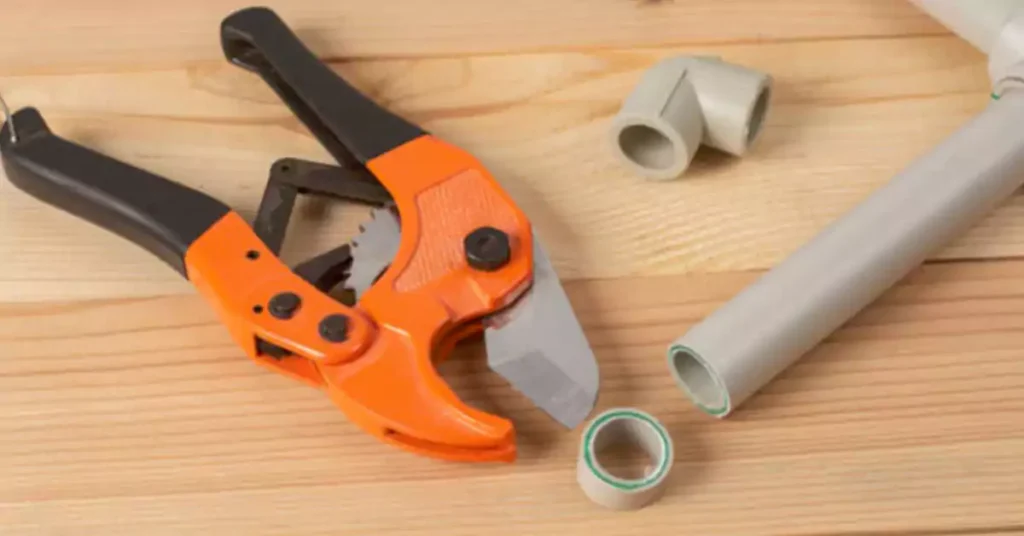
4 Importancia de usar equipos de seguridad:
Al cortar conductos eléctricos, es fundamental priorizar la seguridad personal utilizando el equipo de seguridad adecuado:
1. Gafas de seguridad:
Proteja sus ojos de escombros que salen volando, virutas de metal o plástico y posibles lesiones causadas por cortes o esmerilado.
2. Guantes:
Use guantes para proteger sus manos de bordes afilados, abrasiones o posibles cortes durante el proceso de corte.
3. Protección auditiva:
Al utilizar herramientas eléctricas como sierras alternativas, que pueden generar ruido fuerte, es importante usar protección para los oídos, como tapones u orejeras, para evitar daños auditivos.
4. Mascarilla antipolvo:
Al cortar conductos, especialmente al utilizar herramientas eléctricas, puede generarse polvo o partículas. Usar una mascarilla antipolvo ayuda a prevenir la inhalación de estas partículas y protege el sistema respiratorio.
5 consejos profesionales para la seguridad:
Trabaje en un área bien ventilada: Al cortar conductos, especialmente conductos metálicos, se recomienda trabajar en un área bien ventilada para evitar la inhalación de polvo o humos. Una buena ventilación ayuda a mantener la calidad del aire y reduce el riesgo de problemas respiratorios.
Fuente de alimentación: Antes de cortar o trabajar en conductos eléctricos, asegúrese de que el suministro eléctrico esté desconectado. Esta precaución previene descargas eléctricas accidentales y garantiza su seguridad durante el proceso de corte.
Asegure el conducto: Antes de cortar, asegúrese de que el conducto esté bien sujeto en su lugar usando abrazaderas o una prensa para evitar que se mueva o se deslice durante el proceso de corte.
Medir y marcar: Tome medidas precisas y marque el conducto donde desea realizar el corte. Esto ayuda a garantizar la precisión y evita errores innecesarios o desperdicio de material.
Tome su tiempo: Cortar conductos eléctricos requiere paciencia y atención al detalle. Apresurarse puede provocar errores, lesiones o cortes de mala calidad. Tómese su tiempo y trabaje con cuidado.
4 pasos para cortar conductos eléctricos
Para cortar correctamente conductos eléctricos, es importante seguir los pasos y las técnicas adecuadas. A continuación, se indican los pasos para cortar conductos de PVC y metálicos:
Preparación:
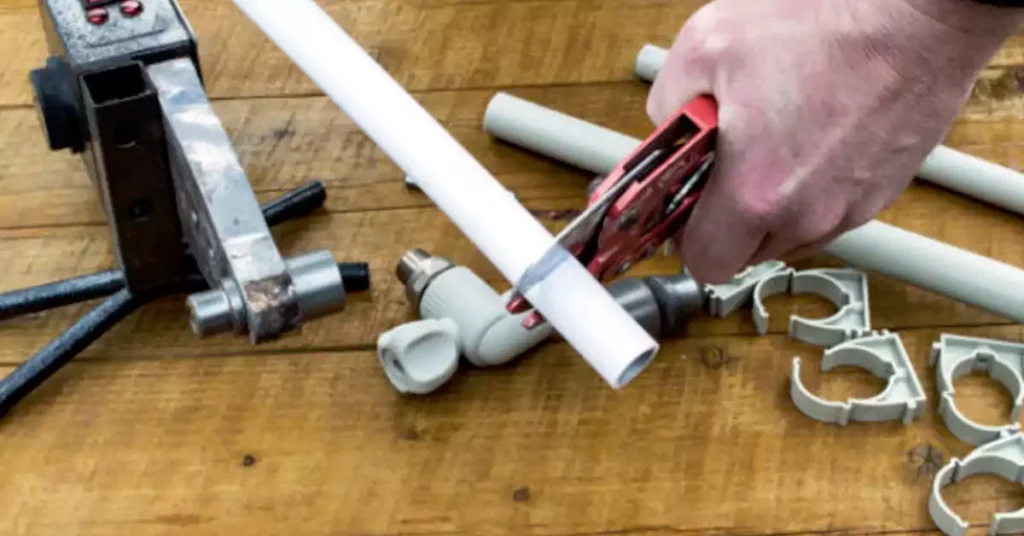
Medir y marcar: Use una cinta métrica para determinar la longitud deseada del conducto. Marque el conducto en la medida con un marcador. Considere los márgenes necesarios para la curvatura, los accesorios y la expansión/contracción del conducto según los requisitos específicos de su proyecto.
Cómo cortar conductos eléctricos de PVC:
Cortar con sierra para metales (4 pasos):
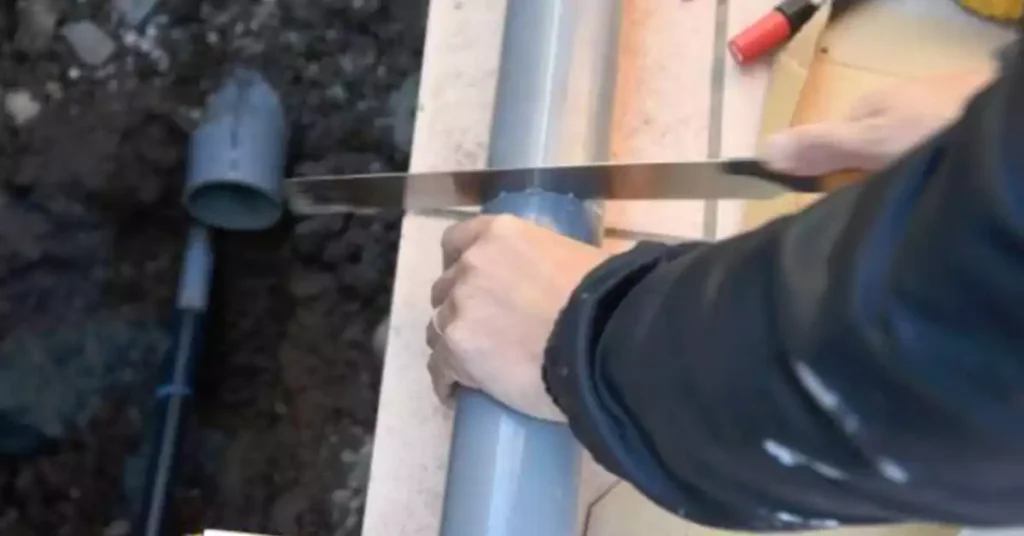
- Asegure el conducto: Coloque el conducto de PVC en una prensa o utilice abrazaderas para fijarlo firmemente en su lugar, asegurando así la estabilidad durante el corte.
- Alinear la línea de corte: Alinee la línea de corte marcada con la hoja de la sierra.
- Cortar con una sierra para metales: Con una hoja de sierra de dientes finos, aplique presión uniforme y comience a cortar por la línea marcada. Realice movimientos largos y suaves para mantener el control y lograr un corte limpio.
- Cómo evitar rebabas o bordes ásperos: Después de cortar, utilice una herramienta desbarbadora o un cuchillo multiusos para eliminar las rebabas o los bordes ásperos del extremo cortado.
Cortador de tubos de PVC (3 pasos):
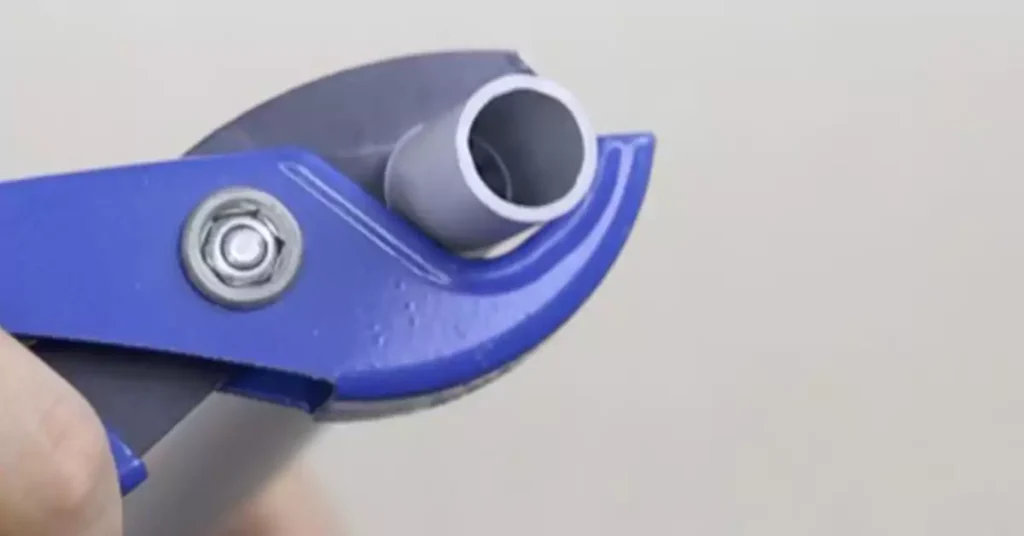
- Posicione el cortador: Coloque el cortador de tubos de PVC alrededor del conducto en la línea de corte marcada.
- Aplicar presión: Apriete firmemente los mangos del cortador de tubos de PVC para aplicar presión y gire gradualmente el cortador alrededor del conducto.
- Completar el corte: Continúe girando y apretando el cortador hasta completar el corte. Los cortadores de tubos de PVC realizan cortes limpios y precisos sin necesidad de desbarbado adicional.
¿Cómo cortar conductos metálicos?
Corte con sierra para metales o sierra alternativa (4 pasos):
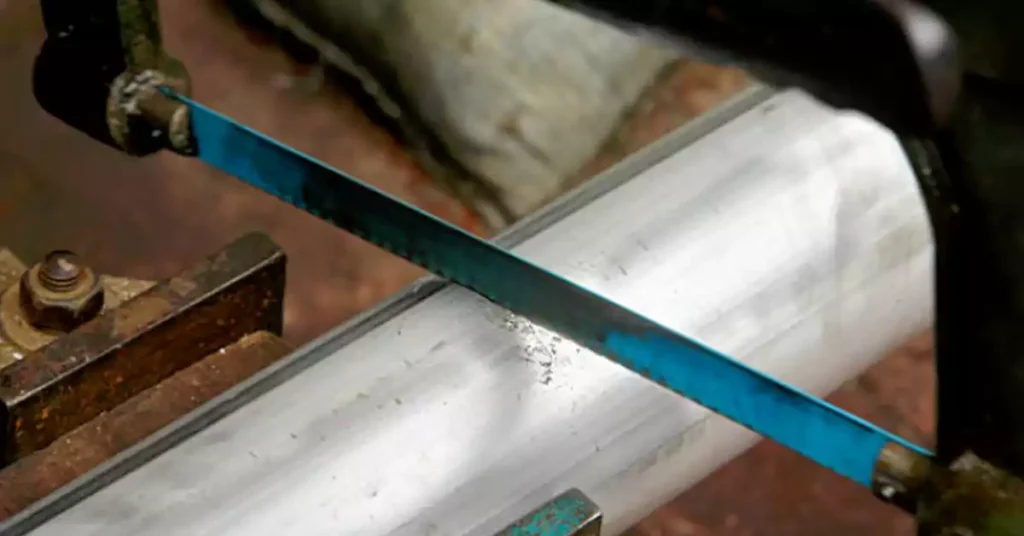
- Asegure el conducto: De manera similar al conducto de PVC, asegure el conducto de metal utilizando una prensa o abrazaderas para evitar que se mueva durante el corte.
- Alinear la línea de corte: Alinee la línea de corte marcada con la hoja de la sierra.
- Cortar con una sierra para metales o una sierra alternativa: Con una sierra para metales o una sierra de sable con hoja para cortar metal, aplique presión constante y comience a cortar a lo largo de la línea marcada. Use movimientos largos y controlados o una sierra de sable para un corte eficiente.
- Cómo evitar rebabas o bordes ásperos: Después de cortar, utilice una herramienta desbarbadora o una lima para eliminar las rebabas o los bordes ásperos del extremo cortado.
Corte con cortador de conductos (3 pasos):
- Posicione el cortador: Coloque el cortador de conductos alrededor del conducto metálico en la línea de corte marcada.
- Ajustar y aplicar presión: Ajuste la cuchilla del cortador de conductos al tamaño del conducto y apriétela. Gire el cortador alrededor del conducto mientras aplica presión hasta completar el corte.
- Selección de cuchillas para conductos metálicos: Al utilizar un cortador de conductos o una sierra alternativa, asegúrese de que la hoja sea adecuada para cortar conductos de metal para lograr cortes limpios y precisos.
Siguiendo estos pasos y utilizando las herramientas y técnicas adecuadas, podrá cortar conductos eléctricos de PVC y metálicos con precisión y seguridad. Recuerde usar equipo de seguridad, asegurar el conducto correctamente y tomarse su tiempo para garantizar cortes limpios y precisos. Priorice la seguridad y consulte a profesionales o las directrices pertinentes para los requisitos específicos del proyecto.
Controles finales y limpieza (5 consejos)
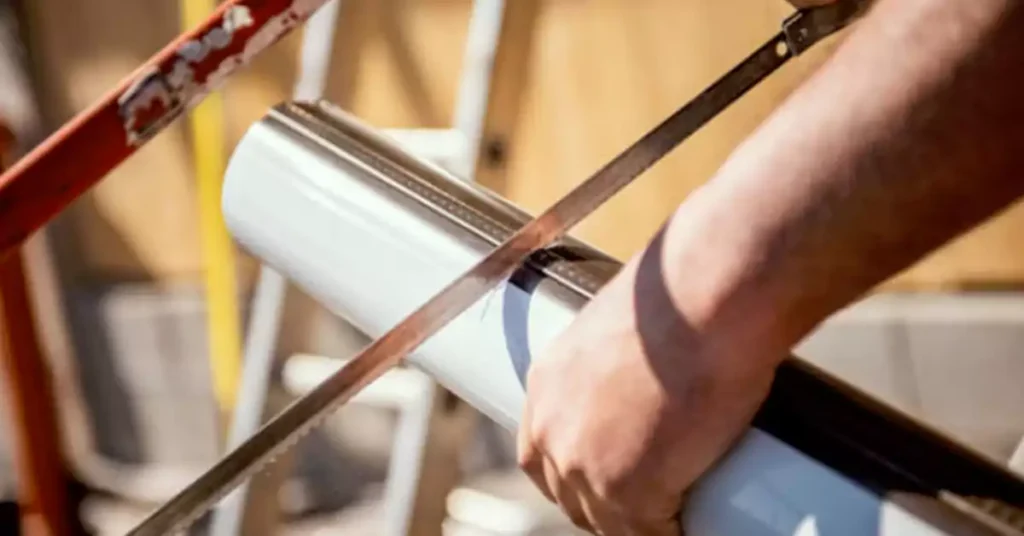
Después de cortar conductos eléctricos, es importante realizar comprobaciones finales y una limpieza adecuada para garantizar la precisión de los cortes y mantener un entorno de trabajo seguro. Esto incluye:
● Medir y verificar:
Utilice una cinta métrica para comparar la longitud del conducto cortado con la medida deseada. Asegúrese de que se ajuste a los requisitos de su proyecto.
● Compruebe si hay cortes limpios:
Inspeccione los extremos cortados del conducto para comprobar su limpieza y rectitud. Verifique que no presenten asperezas, rebabas ni irregularidades que puedan dificultar las conexiones.
● Recoger escombros y virutas:
Recoja los residuos, como virutas de PVC o de metal, acumulados durante el proceso de corte. Utilice un cepillo, una aspiradora o un paño húmedo para recoger y retirar los residuos del área de trabajo.
● Desechar los residuos de forma responsable:
Deseche los desechos y el material de desecho recolectados de manera responsable de acuerdo con las regulaciones locales. Separe los desechos de PVC y metal de manera adecuada para reciclarlos, si es posible.
● Área de trabajo limpia:
Limpie el área de trabajo para eliminar el polvo, los residuos o los escombros restantes. Esto ayuda a mantener un entorno limpio y seguro para el trabajo futuro.
Consejos y consideraciones adicionales
Para cortar conductos eléctricos de manera eficiente es necesario prestar atención a los detalles y tener en cuenta los requisitos específicos del proyecto. A continuación, se ofrecen algunos consejos y consideraciones adicionales para mejorar sus habilidades de corte de conductos:
1. Utilice guías de corte o plantillas:
Para cortes repetitivos, considere crear guías de corte o plantillas para garantizar mediciones precisas y consistentes. Estas herramientas pueden ayudar a agilizar el proceso de corte, especialmente cuando se trabaja en varias secciones de conductos.
2. Instalaciones de conductos complejos o escenarios únicos:
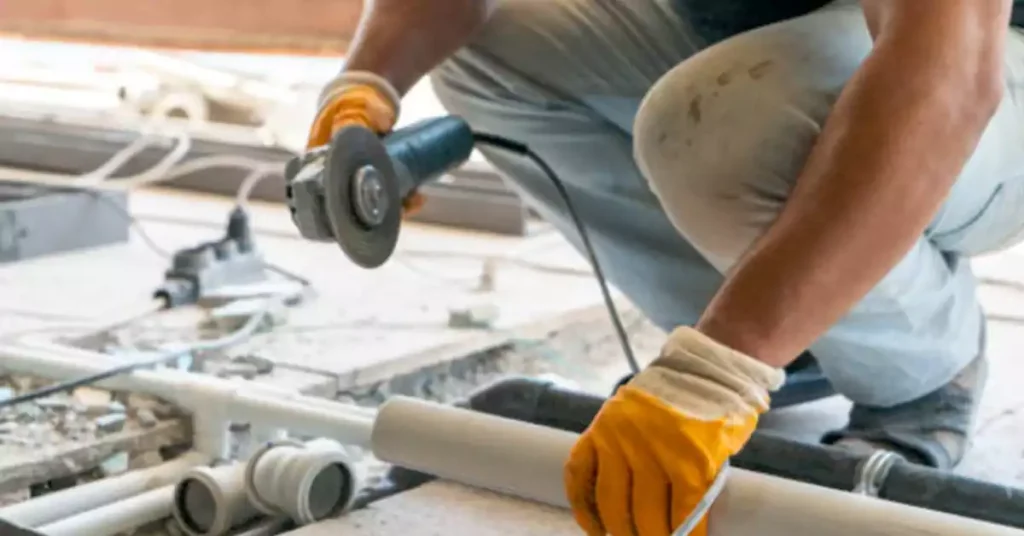
Planifique con anticipación: En el caso de instalaciones de conductos complejas o situaciones únicas, tómese el tiempo necesario para planificar el diseño y los requisitos de corte con anticipación. Esto ayuda a minimizar los errores y garantiza un uso eficiente de los materiales de los conductos.
Considere cortes en ángulo: En situaciones donde es necesario unir conductos en ángulos o se requieren muescas para ajustarlos alrededor de obstáculos, tenga especial cuidado al medir y marcar para lograr cortes en ángulo precisos.
Busque asesoramiento profesional: Si se encuentra con instalaciones complejas, configuraciones desconocidas o desafíos únicos, no dude en buscar asesoramiento profesional o consultar a un electricista experimentado. Su experiencia puede brindar una valiosa orientación para garantizar resultados exitosos.
Conclusión
En conclusión, el corte preciso y exacto de los conductos es crucial para una instalación eléctrica exitosa. A lo largo de este artículo, hemos cubierto puntos clave como la selección de las herramientas adecuadas, la priorización de la seguridad, el seguimiento de los pasos adecuados y la consideración de consejos adicionales para un corte eficiente. Es importante realizar inspecciones finales, limpiar los escombros y desechar los desechos de manera responsable. Al aplicar los conocimientos adquiridos e incorporar estas prácticas, puede garantizar cortes limpios, conexiones seguras y un entorno de trabajo seguro.
El corte preciso de conductos desempeña un papel importante en el éxito general de las instalaciones eléctricas. Permite realizar conexiones adecuadas, utilizar materiales de manera eficiente y reduce el riesgo de problemas en el futuro. A medida que continúe mejorando sus habilidades de corte de conductos, recuerde compartir el conocimiento y la información con otras personas del sector. Al hacerlo, elevamos colectivamente los estándares y promovemos las mejores prácticas en la industria eléctrica.
¿Alguna pregunta sobre conductos eléctricos? Contáctenos o envíenos un correo electrónico en cualquier momento.



